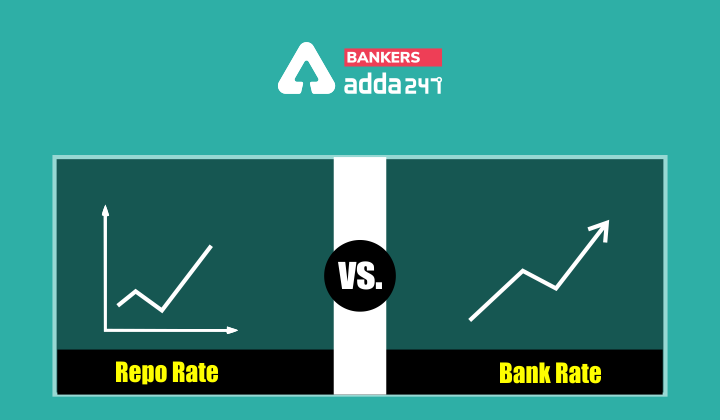Table of Contents
Repo Rate vs Bank Rate: Most Valuable Differences: The Reserve Bank of India being the central bank of our country monitors both repo rate as well as the bank rate. Repo rate vs Bank rate is one of the commonly asked questions. Most of the people get confused between the repo rate as well as bank rate because both these rates are quite similar with a slight difference. Both the rates are the lending rates at which the Reserve Bank of India lends funds to commercial banks but the terms and conditions against which the loan is granted make a difference between the Repo rate and Bank rate. When RBI offers loans to commercial banks at repo rate then it asks for collateral from banks. Collateral is a type of security against which a loan is granted, a collateral can be bonds, agreements etc. Whereas in the case of bank rate no collateral is required to be given. Let us first understand the Repo rate and bank rate before knowing the differences.
Repo Rate vs Bank Rate: Most Valuable Differences
Just like in the hour of financial hardship a common man look towards banks for a loan in the same way commercial banks do face a financial difficulty and approach the apex bank of our country to take a loan. The Reserve Bank of India is called the lender of last resort. This is said because when commercial banks don’t get help from anywhere they look towards RBI as the last option which can save them from a financially crunch situation.
Definition of Repo Rate
Repo rate is the rate at which the Reserve Bank of India lends loan to commercial banks. When commercial banks borrows money at repo rate then it sells its securities to RBI with an agreement to repurchase its securities at the predetermined price. So basically repo rate is the interest charged by RBI for a loan borrowed by commercial banks.
Repo Rate Key Points
- The agreement which is done by commercial banks with the RBI when it take a loan at repo rate is also called repurchase agreement.
- The tenure of loan which is borrowed at repo rate is one day
- RBI provides overnight loan at repo rate to cater the short term financial needs of commercial banks.
Definition of Bank Rate
Bank Rate is the rate or discount at which RBI grants loans or advances to commercial banks. Hence, it is also called Discount Rate. The money that commercial banks repay to RBI is the interest amount on the loans.
Bank Rate Key Points
- When commercial banks takes loan at bank rate then they don’t need to give any collateral
- Commercial banks take loans at bank rate to meet their long term financial goals
- The loan at bank rate can be taken for overnight, fortnight, or even 28 days
- Bank rate is also a liquidity adjustment tool which is used by the Reserve Bank of India to keep inflation in control
Repo Rate vs Bank Rate: Most Valuable Differences
Candidates can check the basic differences between bank rate as well as repo rate from the table given below
| Bank Rate | Repo Rate |
| It is the rate of interest at which RBI grants loan to commercial banks | It is the rate of interest paid on the borrowed money with an agreement to buy back the securities given as collateral to RBI |
| Here no collateral is required to be kept with RBI | Collateral is kept with RBI like government bonds or securities |
| The tenure of loan taken at bank rate is up to 28 days | The tenure of loan taken at repo rate is 1 day |
| Bank Rate is always higher than repo rate | Repo rate is always lower than bank rate |
| Bank Rate loans suffice long-term lending rates and requirements of banks. | Repo rate is a monetary mechanism to decide the liquidity rate |
FAQs: Repo Rate vs Bank Rate: Most Valuable Differences
Q.1 What is the current repo rate and bank rate?
Ans The current repo rate and bank rate are 4.40% and 4.65% respectively.
Q.2 Who decides the repo rate as well as bank rate?
Ans The monetary policy committee decides the repo rate as well as bank rate





 GA Capsule for SBI Clerk Mains 2025, Dow...
GA Capsule for SBI Clerk Mains 2025, Dow...
 The Hindu Review October 2022: Download ...
The Hindu Review October 2022: Download ...
 Banking, Economy Capsule for SBI PO Main...
Banking, Economy Capsule for SBI PO Main...





